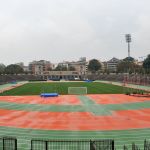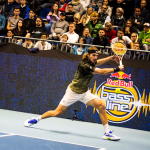
Why do we always wear white at Wimbledon?
One of the many traditions that make the British tournament one of the most fascinating sporting events in the world
June 27th, 2022
With the tennis season nearing its halfway point, we are finally getting to the heart of the third grand slam tournament of the year and the oldest and most prestigious event of this sport: Wimbledon. On the famous English turf, in the fog of London, what is staged is not only one of the most important competitions in the world, but also one of the most authentic expressions of elegance, class and tradition in the world of sport. The Wimbledon tournament is still rich in traditions, inherited and kept intact over time and which help to preserve the uniqueness and soul of the most historic tennis event in the world. The two-week tournament begins every year six weeks before the first Monday of August and its representative colors are green and purple. During the the matches, the expression "hawk eye" will not only refer to the slow motion system used to check the validity of the points, but also to the watchful gaze of the hawk who, as per ancient custom, will fly over the playgrounds to chase away other birds that could disturb the tennis players in the competition.
But of all the centuries-old heritage of customs that has survived to this day, the most characteristic is undoubtedly the one that force players to wear white uniforms, shoes and accessories. But where does this rigid indication on the dress code come from? The tradition dates back to the very first editions of the tournament, in which the English players of the All England Lawn Tennis and Croquet Club (now better known as Wimbledon) used to wear white as it was the color that best managed to mask the sweat spots, considered not very elegant, and because better than the others it embodied class and sobriety.
Players like Roger Federer, Eugenie Bouchard and Nick Kyrgios (not just any names) have experienced themselves the intransigence against the violation of this rule. In 2013, during the debut match against the Romanian Hanescu, the Swiss king of Wimbledon (eight times winner of the tournament) wore Nike shoes with a fluorescent orange sole which was deemed inadequate and which made him forced to change clothes; Kyrgios and Bouchard instead had some problems with the band and bra respectively. Andre Agassi, in order not to take the court without the garishly colored clothing from his own Nike line typical of the 1980s, gave up playing in it from 1988 to 1990. Yet looking back on the past, there are also some softer approaches from the inspectors, as in the case of the red headband worn by John McEnroe in the iconic final played against Björn Borg in 1980.
This year's edition has already made a lot of talk about itself and will certainly be historic in its own way, because of the exclusion of the Russian athletes and the following response of the ATP circuit which has ordered the non-assignment of points valid for the general classification based on tournament placement. It is useless to dwell on how significant the shadow of the controversy that accompanied such decisions was. However, even if stripped of its relevance for ranking purposes, Wimbledon promises once again an unmissable show on the field, with the best tennis players in the world competing under the London sky, on the oldest stage this sport has to offer, always strictly in white. Of course eyes are focused as usual on Djokovic and Nadal, respectively the title holder and the absolute star of the current season, but also on Matteo Berrettini, finalist of the last edition and coming from two consecutive trophies won on this surface at Queens and Stuttgart .

























